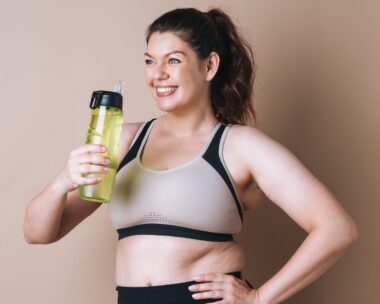Like most diseases, the sooner you discover breast cancer and start treatment, the better your chances of beating it. That’s why you should always seek medical advice if you spot anything unusual. Read on and find out what to look for.
HANDS-ON
A lump is the most obvious sign of breast cancer, so go to your doctor immediately if you discover one. But bear in mind that a lump doesn’t necessarily mean cancer – they’re often due to cysts or fibroadenoma, a collection of fibrous glandular tissue. And some women just have naturally lumpy breasts. Check yours after your period, when they are less likely to be naturally lumpy. Also, feel under your arms and visit your doctor if you notice anything out of the ordinary.
PAIN IS NORMAL
Tender or painful breasts are very common, but this doesn’t mean you have cancer – in fact, it’s the hard lumps that aren’t painful that are more likely to be cancerous. Many women have sore breasts before their periods, while others can have prolonged pain not related to cancer.
SKIN IRRITATION
With inflammatory breast cancer, the skin over the tumour can become itchy – and also red, inflamed and painful – and these symptoms should never be ignored. A condition called Paget’s disease of the nipple, associated with breast cancer, can also cause itchiness. Chances are your itching is most likely due to eczema or dermatitis, or even a new bra, but you must see a doctor to rule out anything potentially dangerous.
GET IT CHECKED
Nipple discharge can be associated with breast cancer, especially if you also have a lump, or the discharge is bloody. However, it is usually due to a benign condition, such as an abscess, infection, fibroadenoma, hormone imbalance or the result of an injury. Sometimes it happens for no obvious reason and clears up on its own. But always get it checked by your GP.
SURFACE CHANGES
If the skin on your breast looks rough, or is puckered and dimpled, like orange peel, it could be a sign of breast cancer. Changes to your skin can mean there is something going on under the surface that needs to be investigated.
INSIDE OUT
Some women are born with inverted nipples, while others can develop them after breastfeeding or in old age. But if one nipple becomes inverted for no apparent reason, it is time to see the doctor.
SCREENING
A screening mammogram is the best method for the early detection of unsuspected breast cancer. The New Zealand Breast Cancer Foundation recommends a screening every year for women aged between 40 and 49, and every two years for women from the age of 50 onwards. For more information, visit the websites: nzbcf.org.nz and anychanges.co.nz




